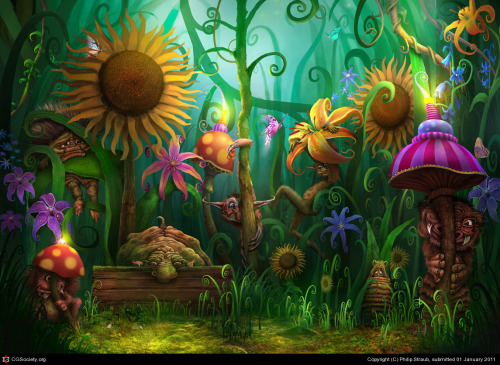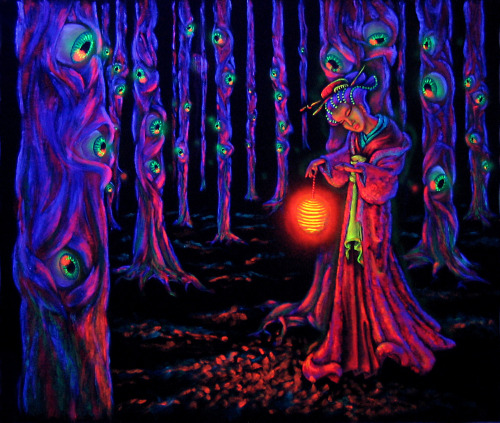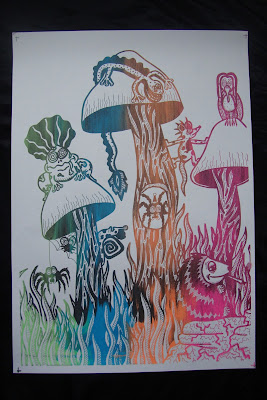Wednesday 30 January 2013
INKSPIRE PRESENTATION
PPP blog: Studio Brief 3//Life's a pitch: Presentation for Inkspire uploaded on Emilys blog.
LIFES A PITCH
Pop up shop
As
we are a small business we want start off by selling our craft through
the setting up of a pop up shop. This is a cheap way of getting our
products out there and allows us to manage out stock. We would take out
pop up to shop to craft fairs and print fairs to target buyers. The idea
of flash retailing allows us to not be held down to one location.
Especially as we are a new business, we may not know straight away who
are biggest target audience is. Other than our pop up shop, we want to
create website similar to an etsy shop, to sell our products. This will
bring us an online presence and increase our chances of becoming a
recognised design company.
Creating a Buzz
A
new business needs strategy to get people talking about them. We
thought we would create something personal linked to our pop up shop.
For example, we wanted to have a tea and biscuit stand to drawn
customers in. This also creates a friendly environment. We would also
offer on the spot deals to keep sales going. Our branding is important
and could create us design opportunities Everything for the pop up shop
sign to the van it comes will needs to communicate our design company.
Staying in touch
Nowadays,
it isn't enough to sell your products in a shop, you need to ensure an
online presence is ever evolving Networking is key to keeping design
alive. Creating a blog in which customers can follow will keep them
updated and interested. Similarly, setting up Titter and linkedIn
accounts will build a foundation for our business.
Company Costs
This
is the tricky part. We decided that we want to
be partnership company as is a fair business approach and
each individual is equal. We would take up a young persons start up loan
of £2,500 which will gives money to buy our equipment, programmes
and resources At first we will work from home as we might not have
enough money to hire a studio. The wages to begin with will be split
commission. We will need to buy software, for example Photoshop and
Illustrator which will cost us £560.00. We will also need to take into
account petrol costs and buying or hiring a vehicle.
Draw Something
We
want to produce products such as posters, stationary, phone cases,
basically novelty gifts. We want to mainly keep our products hand
crafted and illustration best. We want to use both type and image to
engage customers.
Product Range
The
key for us selling as many products as possible, is applying a pattern
over a a number of products. These may be screen-printed fabric printed
or digitally printed. Each designer in our team will take part in
creating patterns and ranges.
Responsibilities
As
we are a partnership business, we have decided to share
the responsibilities and appoint each designer to their job. Obviously
these may cross over at times but it is a starting point to our small
company.
Website
Depending
how well our company will take up, a website will be created. The
website will contain an online shop as another form of selling. A
contact area where people can reach us. An exhibition and events page
where what we are doing can be updated regularly Also a work page will
be displayed, showing possible clients.
Existing competition
As
a small design company we are going to face a lot of competition
However, identifying these will help us face the competition. Businesses
like paper chase, pylons and Jonny's cupcakes are where we see our self.
Obviously this is a long time goal.
Monday 28 January 2013
LIFES A PITCH COSTING - LOANS
Start-up loans scheme expanded
The scheme had originally been aimed at 18-to-24-year-olds, but is now being expanded to those aged up to 30.
To cater for the wider age band, the funding available for start-up loans will rise from £82m to £112m.
But the scheme, which was announced at the end of May, has only lent out £1.5m so far.
The Start-up Loans Company, which runs the scheme, said the relatively slow start was due to the time taken to set up local partnerships, but that the pace of loans had picked up during December.
The target is to lend all £112m by April 2015.
More than 3,000 people have applied for the loans so far, but if the target is to be met then almost 45,000 entrepreneurs will have to take out the loans.
The expansion was officially announced by Prime Minister David Cameron at an event in Preston.
.
"The government's role has got to be to try to do everything we can to encourage more start-ups and then to help them to grow, to get finance and take people on," he told an audience of young people and entrepreneurs.
Mr Cameron said banks should also be doing more: "A lot of this should be the job of banks, but frankly after the terrible problems of 2008-9... there are gaps in the market".
One of those gaps was start-up finance, he said. "I am not content to sit back and wait for the banks to get on with this work."
Slow start
But Labour's shadow business secretary Chuka Umunna criticised the way the scheme was being delivered.
"With our economy flat-lining it's essential that initiatives like the Start-up Loans scheme are delivered effectively if they are to provide real opportunities for our young entrepreneurs."
Mr Umunna said the numbers of loan given out so far was massively behind target and the government needed to tackle a lack of awareness about the scheme.
Start-up loans have generally been welcomed by business groups, although there have been suggestions that the average of £2,500 on offer may not be enough to make a difference.
"It is not about creating the next multinational, it is about creating a series of micro-businesses, giving you enough capital to start your own business," said Ketan Makwana, from Rockstar Youth, one of the organisations administering the loans.
But Mr Makwana said the most important part of the scheme was the advice and mentoring that young people get along with the loan.
He told the BBC that he rejected the "cynical view" that the programme was a cheap way of getting people off the unemployment register.
"What it is doing is inspiring a generation to get Britain back into business," he told BBC Radio 4's Today programme.
"It is giving an opportunity to those who want to start a business and maybe increase employment opportunities for others in the future."
'Major shift'
The Start-up Loans Company is chaired by James Caan, who is best known for his appearances on the television programme Dragons' Den.
"I am delighted to see that more and more young people are now looking to set up their own business," said Mr Caan.
"What is clear about the scheme is the take-up is there.
"We have already backed 460 businesses in the last three months. We are looking to back 100 businesses a week," he told BBC News.
The scheme was created by government enterprise advisor Lord Young, whose report on small businesses last year suggested that if the UK was as entrepreneurial as the US, an extra 900,000 businesses could be set up.She said she hoped the scheme would help overcome a negative attitude towards young people and show would they could achieve.
The loans must be repaid within five years, and interest will be charged at the level of inflation measured by the the Retail Prices Index (RPI), plus 3%.
RPI in November stood at 3.0%.
The loans are part of the government's attempts to reduce youth unemployment.
The most recent official figures showed that 17.9% of 16-to-24-year-olds who were not in full-time education were unemployed.
Direct grantThis is a cash award, which is usually given out for activities such as training, employment, export development, recruitment or capital investment projects. With a direct grant most schemes usually require the company involved to put up around 50% of the cost.
Repayable grantUnder this type of scheme cash funding is offered for a project with the intention that the sums are paid out of future revenues. However, if the project fails, the grant is written off.
Soft loanA soft loan is a special type of grant where the terms and conditions of repayment are more generous (or softer) than they would be under normal financial circumstances. So, for example, the interest rates may be less, or there may be no interest to pay at all, and the repayment terms could also be for a longer period.
Equity financeWith equity finance a capital sum is injected into the business and the provider of the funds takes an equity share of the enterprise and (hopefully) when the value of the firm increases the stake can then be returned. However, unlike venture capitalists, the expectations and requirements of the providers of public funds are usually less demanding.
Free or subsidised consultancy
Start-ups can often find themselves in the situation where they are lacking a particular set of skills and there are some specially run schemes which offer to provide these either for free or at subsidised rates.
Start-ups can often find themselves in the situation where they are lacking a particular set of skills and there are some specially run schemes which offer to provide these either for free or at subsidised rates.
LIFES A PITCH RESEARCH
Setting up a Design Studio
The great thing about starting a design agency, be it offline or online design, is that there's a pretty low barrier to entry. For a relatively small outlay, you can teach yourself the tools of the trade and start pitching for work.
However, this means lots of other people are doing it too. Hundreds of agencies and freelancers are all fighting for the same contracts and projects. Make sure you pick a niche and research it well when you launch your design agency. A specialism in, say, legal websites, Facebook campaigns, or pharmaceutical magazines will give you the edge in industry-specific pitches.
Many design agencies evolve organically. It often begins with a single freelancer, completing projects to deadline and making a living from a portfolio of clients. When the freelancer ends up with too much work (s)he will have to take on some help and create a design network. Acclaim and experience increases, a brand is born and the agency takes off.
Day-to-day
First of all, be prepared for long hours staring at a screen. Design work is fiddly and requires oodles of patience and tenacity. The good news is, if you are freelance and working on contracts, you can choose your working hours. This can be handy when working on digital projects: if you prefer to work at night, you're better placed to pick up bits of work from the US and beyond.
As the business starts to scale and you take on employees/office space, there may be exciting brainstorming sessions where pitches are thrashed out and ideas and bandied about. Expect tight deadlines, exacting clients who don't always know what they want, and a whole lot of screens.
Check out this video from London-based agency Strawberry Soup for a sneak peek at a day in the life of an design company.
The industry and market
The design economy in the UK is huge. Last recorded figures show that £33.5 billion was invested in design in 2008, which is 2.4% of GDP. It's a hugely competitive arena: in Central London alone, there are as many as 35 web design companies (and many more freelancers) per square mile.
However, the design industry is in the sweet spot at the moment. The government is in the middle of a push to increase investment in and awareness of small firms operating in intellectual property industries, design included.
Whether this will translate into more grants and public sector opportunities for up-and-coming designers remains to be seen, but keep your eyes on the prize.
Natural skills
- Patience: Will you keep your cool when a client sets an impossible deadline or changes a design for the 100th time?
- A keen eye for design: Are you up to date with the latest innovations in typography or, for a digital agency, an up-to-date knowledge of web languages?
- Are you up for some stiff competition? There are thousands of design agencies in the UK, from one-man bands to sprawling agencies. You will have to compete with all of them. Are you up for the challenge?
- Do you enjoy the challenge of finding and closing new business? A big part of your job will be chasing new clients. As your business grows and you take on more staff, you may do less and less actual design to focus on running the business. Are you happy with that prospect?
- Lose the ego. You may LOVE your latest version of a design project, but if the client hates it, wants the logo in grey and in a Times New Roman font, and won't hear otherwise, you'll have to swallow your design pride and do the job. There's no room for prima donnas in this trade.
Training
There are a huge range of training options available for designers. You can attend a course at a college, take a full degree in the myriad design specialisms, or enrol in a web course.
- Central Saint Martins in London has turned out hundreds of successful designers, from AdBusters art director Jonathan Barnbrook to industrial designer and CEO of Dyson, James Dyson.
- The Home Learning College offers courses in internet and web design and promises a 90% success rate.
- Or teach yourself: Learn the basics of Photoshop and InDesign (publishing) or Dreamweaver and Fireworks (web) through web tutorials and product walkthroughs.
Premises
The great thing about running a design agency is that you don't necessarily need an office. You can work from home and manage a whole network of freelance designers without having a permanent base.
If you do want a bricks and mortar office, popular locations in London (where the largest number of design agencies operate) include: Soho, where rent stands at between £30-50 per square foot, Clerkenwell, at £25-45, and Hoxton, £25-45.
Staff
The speed at which you can grow your business depends on two factors: The limits of your time, resources and imagination; and your ability to recruit other designers.
There are hundreds of thousands of freelance designers working in the UK right now. Not to mention all the design graduates pouring out of university and looking for work.
How can you track these hotshots down?
- Well, you could start by looking at the Freelance Design Directory.
- Or go directly to universities like Goldsmiths, Manchester Metropolitan, Bournemouth Uni and the Chelsea College of Art & Design.
- Use LinkedIn to seek out likely designers
- Form links with collaborative working spaces such as TechHub and Lemon Studios
- And keep a weather eye on MeetUp.com for any useful networking evenings that will let you rub shoulders with the glitterati of the design community.
Money
Presuming you already own a laptop or computer, your costs come down to software and time. Software doesn't come cheap, although many of the packages below come in Student/Teacher of pared down 'Elements' options which could be more cost-effective. However, if you want to make design your profession, it's important to have the latest tools or risk being left behind.
- Photoshop CS5 starts at around £279.99
- Dreamweaver CS5.5 - from £229
- Fireworks CS5 - from £123
- InDesign CS5.5 - from £279
If you decide to do a design course, expect to pay over £500 for a short course, and over £3,000 a year for a Bachelor of Arts.
If you don't have the start-up capital for training, consider joining an agency and learning the ropes from the bottom up (although you may be making a lot of tea to begin with).
There are also a few standard business overheads:
- Professional Indemnity Insurance: from £250 a year
- Telephone & internet: around £50 a month
- Website domain name and hosting: between £100-250 a year
First steps
- Research your market: Make sure you pick an area of focus early on. It's important to distinguish your brand from the hordes of other design agencies out there.
- Assess the competition. Look at all the other design agencies in your area. How do their compare to your proposition? Can you learn anything from what they are doing? Steal any smart ideas from their website? Remember, this industry is dog eat dog, so be the Pit-bull not the Chihuahua.
- Create a beautiful website that showcases your ability and range. Remember, your website is your company's window to the world. Include some examples of your work, full contact details and, if you have time, a blog to talk about some of the design issues and trends that you care about. Customers will not trust you to design their magazine or build their website if yours is a disaster.
- Open a start-up business bank account and talk to your bank manager about start-up loans for software.
- Open an account with a stock image library. Subscriptions start from £100 a month while image download fees start at a couple of quid and go up to £75 for a single image.
- Get on Twitter. It's a great way to canvas for work, show off existing projects, network with other designers and read up on new design innovations.
- Get a Dropbox account. It makes sharing large images and files a doddle. Remember, most email systems can't digest incoming messages with over 10MB attached.
- Do a stint on 99Designs to build a portfolio of work. It's a great way to get exposure to a wide selection of clients and could provide future contact fodder.
- Draft a client contract that you can tweak for each project. Start out doing things properly and you'll avoid costly mistakes and client tussles along the way. There's some great tips here from Stuff & Nonsense founder Andy Clarke.
Tips
- Stephen Holmes from Old Street-based graphic design firm Bloody Big Spider says: "Get an accountant and get good at doing the business side of things. This will give you more time to do the design work you love."
- Remember: everything has a value. Ideas are currency and time is money, so make sure you charge for ideas and time. The idea is to make a fair profit, not run yourself ragged without even breaking even.
- Do your homework: Research what the average daily rates are and don't be afraid to stick to your guns. If you have a brilliant portfolio of work, you don't need to compete with cut-price patch jobs from 'production line' designers. Quality with value = a no brainer for the client.
- Keep your finger on the pulse by subscribing to design publications like .Net or Wired magazine
- Control cashflow - Take a deposit, invoice in stage payments and spend at least some money on regular targeted sales activity.
- Nottingham-based design studio Shape or Form tweeted this little nugget through: "Contracts, coffee & couches- Be prepared, be awake, and find an inspirational workspace."
- Play to the areas you know - nothing works better than a relevant case study.
- Reuse and recycle. Save all of your work and repurpose fonts and images that hit the cutting room floor with previous projects.
- James Sheriff, co-founder of Barnsley-based agency Genius Division, says: It's all about communication between you and the client. Make them sure they know when you should be paid before starting the job!"
Common Pitfalls
- Not pricing your work accurately. If you push down your prices too far, you could end up working for peanuts. While this makes sense in the beginning when you're trying to build a portfolio, once you're established, make sure you stick to your rate-card.
- Projects often change and evolve - usually resulting in more work for you. Make sure you get sign off on specs early, invoice at every stage of production, and charge for any additional graft.
- All your designs must be created - from scratch - by you or your team. If you 'borrow' or resell other designers' work, or steal images you could face legal action, which can be very expensive.
- There's plenty of equipment and software out there to help you create brilliant designs. But you don't need it all at once! Start with the most crucial software - a lot can be accomplished with one or two major applications, although it may take a little more time - and you could save a lot of money. Once you have money coming in, you can buy the perfect scanner, graphics tablet and other design tools.
Tuesday 22 January 2013
SELF INITIATED SCREEN PRINT PROJECT
As
a personal project I wanted to experiment with screen printing as this
is something that I have been enjoying over the past few years, but I
have not had the chance or time to do ay personal projects. With this in
mind I set out to produce some prints. I decided to take my inspiration
from festivals and nights out I go to which are decorated heavily
with psychedelic UV wall hangings and trippy art-work, this has been
something which has always interested me from a young age...bright
garish colours that glow in the dark! I wrote myself a brief to give me
some sort of guidelines to follow, but the main thing I aimed to get out
of the project was to improve my screen printing skills.
The Brief - The Mushroom Forest
Create
a UV reactive screen print, taking inspiration from psychedelic
artwork, with the theme being directed towards woodland critters. The
illustration style must be hand rendered rather than digital lines this
fits better with the psychedelic free flowing ethos behind this style of
artwork.
Mandatory Requirements
A2 format
UV Reactive
Screen Prints
Inspiration
I
have taken inspiration from many different aspects. But mainly from
festival art and stage set ups and various events, these kind of night
time raves use lots of UV light and UV reactive paint to create magical
environments which throws so many different things at you. I wanted to
create a trippy mushroom forest, inspired by the magical festival
atmosphere and my love for animals.
Tomorrow Land
Secret Garden Party
This is a perfect example of the kind of imagery and experiences
that has inspired me. This looks magical.
Rainbow City
Lisa Kelleher
UV ART
Trippy Forest
Shiva
Mushroom Land
Neon Style Mushroom Land
Design Process
Initial Sketch
In
order to stick with the psychedelic theme I wanted to create a trippy
mushroom forest, I started to think about all the creatures that could
be affected by eating these wild hallucinogenic mushrooms in nature. Its
said that loads of sheep trip balls from eating Magic Mushrooms. I
wanted to create an illustration showing other woodland critters off
there nut. I took inspiration from festivals set ups, where they have
giant mushrooms and creepy animals etc. I decided to go with spiders,
lizards, frogs, hedgehogs and mice.
I
drew this using 2 different weight pens, a marker for the thicker edges
and a berol for the finer detail. After several hours of drawing I had
finally finished. It was a relief to complete it as it was on to the fun
bit.
Digital Colour Experiments
In
order to get an idea of how the image would look with some colour I
scanned in my illustration onto my mac then Live traced the Image in
Illustrator and then used the bucket tool to add colour to the design. I
tried out many variations to see what worked best. Sampling the drawing
with different amounts of colour.
I was not a fan of the background colour
This was something a little bit different, Quite like the
purple orange combo, looks dated.
I came up with this version which I quite like,
It almost looks like an X-Ray and slightly 3D
The Pink was a little bit too dark here and the purple wasn't quite right
Quite an interesting combination but the yellow didn't do it for me.
All wrong
One of my favourite designs. The right balance between the colours.
Nice combo
Reggae Inspired
This
definitly worked the best I feel. The black gives a nice contrast
against the others. I will not be able to recreate these colours exactly
when mixing the paints but will work on a similar colour scheme. It was
quite a fun process digitalising my drawing but also time consuming,
there would definitely be a quicker option for next time. As changing
the colours for each image took forever. I have since then been shown a
way to Change the entire colour palette at once which is a big help.
Screen Prints
Black Outline Print
I decided to run a couple of outline versions as well as
the colour ones to get a bit of variation in the prints
Gradient Print
I messed about using different paint at once, this came out with some
pretty random out comes, I like how it isn't perfect, Reminds me of skittles.
5 Colour UV Print
The
5 colour screen prints worked really well eventually. Overall the
screen printing took me around 3 days. I did a run of 25 5 colour
prints, 4 black and, 4 gradients. I think this was a ambitious effort
and I really did not expect it to take aslong as it did, but there were
many errors along the way. The first lot of paint was too thick so it
set in the screen pretty much straight away. Then I managed to mix the
wrong colour which set me back some more. But once I had finally got to
grips with everything the process became smoother, and after the first
couple of layers were down I had gotten into the swing of things and
managed to get them all done by the third day. I am really happy with
how they have turned out, I think 5 colours was fairly ambitious as it
was tough to get the registration right ascross all 5 layers, but I
managed to pull it off. The layers dont match up exactly but thats the
good thing about screen printing, everyone is different. The patches
where they don't meet up has resulted in white showing through which
gives the drawing an extra layer essentially and also gives the image a
minor 3D quality.
Here
is the print under UV light, the photo is not the best as my camera is
not up to scratch but you can see how the colours glow brightly,
It definitely comes to life under this light, I feel I have created
a psychedelic piece which matches up to current designs, I have applied
my own style but stuck with the conventional methods. The one problem
was that the blue paint is not UV reactant which lets the image down
slightly. But we learn from our mistakes. I will take on board all my
errors and improve for next time.
FINAL BOARDS
Subscribe to:
Posts (Atom)

























